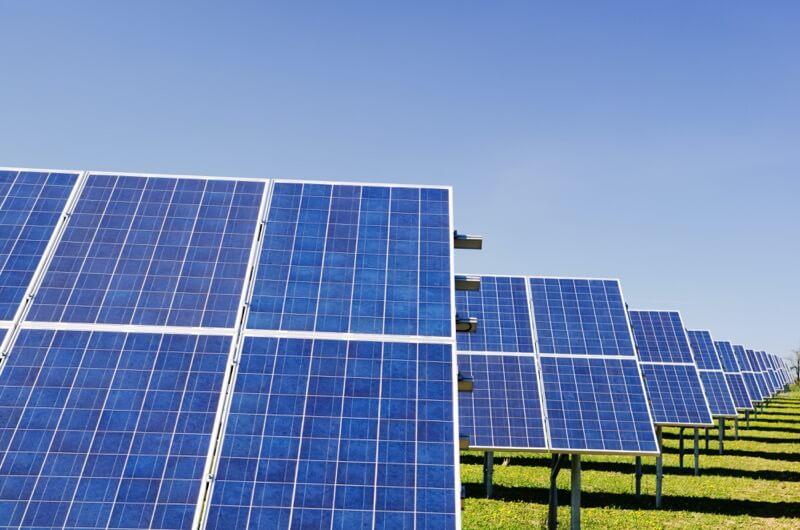Table of Contents Show
In today’s fast-paced world, managing energy efficiently is crucial for businesses and individuals alike. Energy management not only helps reduce costs but also enhances productivity and sustainability.
In this blog post, we will explore why energy management matters, the steps to master it, the role of technology in optimizing energy consumption, how to create an effective energy management plan, successful case studies, and valuable tips for sustaining energy efficiency.
Join us on this journey as we delve into the key principles of mastering energy management to achieve greater efficiency and productivity.
Why Energy Management Matters?
Efficient energy management optimizes productivity, reduces costs, and helps businesses contribute to a more sustainable future by minimizing waste and utilizing renewable sources.
Efficient energy management is crucial for optimizing productivity and reducing costs. By carefully monitoring and controlling energy usage, businesses can minimize waste and improve overall operational efficiency.
Effective energy management not only saves money but also contributes to a more sustainable future. It allows organizations to reduce their carbon footprint by utilizing renewable sources and implementing energy-efficient technologies.
Understanding Energy Management
To master energy management, it is essential to have a comprehensive understanding of how energy is consumed within an organization. This involves analyzing the various systems and processes that contribute to energy consumption, identifying areas of inefficiency, and implementing strategies for improvement.
1. Definition and Scope:
Energy management involves the strategic planning, monitoring, and optimization of energy usage within an organization. It encompasses activities such as assessing energy consumption patterns, identifying areas for improvement, and implementing measures to reduce waste. By effectively managing energy resources, businesses can not only minimize costs but also enhance sustainability efforts.
2. Role in Reducing Costs:
A robust energy management system plays a crucial role in driving cost savings for organizations. Through comprehensive analysis of energy usage data, businesses can identify inefficiencies and implement appropriate measures to reduce consumption. This proactive approach helps in optimizing resource allocation and mitigating unnecessary expenses associated with excessive or inefficient use of energy.
3. Key Components of an Effective System:
An effective energy management system consists of several key components that work together harmoniously. These include regular monitoring and analysis of energy consumption patterns using real-time data analytics tools and software solutions.
Implementation of efficient technologies such as smart meters, or sensors to track usage accurately; employee training programs on sustainable practices to foster awareness; ongoing maintenance initiatives for equipment upkeep; and adoption of renewable sources like solar panels or wind turbines can help manage energy in a better way.
Mastering the art of energy management allows organizations to maximize efficiency while minimizing costs. By understanding the definition and scope of this discipline, recognizing its role in reducing expenses through optimized resource allocation, as well as embracing key components essential for an effective system – businesses can unlock substantial benefits from improved sustainability practices.
The Benefits of Efficient Energy Management

1. Increased operational efficiency and productivity:
Efficient energy management allows businesses to streamline their operations and optimize the use of resources, leading to increased productivity. By minimizing energy waste and implementing smart technologies, companies can reduce downtime caused by equipment failures or inefficiencies.
2. Environmental sustainability and reduced carbon footprint:
With efficient energy management practices in place, organizations can significantly reduce their carbon footprint. By using renewable sources of energy, investing in energy-efficient equipment, and implementing conservation measures, businesses contribute to a greener world for future generations.
3. Financial savings through optimized energy consumption:
Effective energy management translates into significant cost savings for businesses. By analyzing consumption patterns, identifying areas for improvement, and adopting innovative solutions such as automation systems or solar power generation, companies can lower their overall operating expenses while still meeting their performance objectives.
Steps to Mastering Energy Management
Conducting an energy audit is the first step towards mastering energy management. By assessing the current energy usage patterns and identifying areas of improvement, businesses can develop effective strategies to minimize waste and maximize efficiency.
Once the energy audit is complete, the next crucial step is to identify sources of energy waste. By closely examining equipment, systems, and processes, businesses can pinpoint inefficiencies and implement targeted solutions to reduce unnecessary consumption.
Implementing energy-saving measures is essential for optimizing efficiency. This involves implementing interventions such as installing smart meters or upgrading equipment with more efficient alternatives. These measures not only promote sustainability but also lead to significant cost savings in the long run.
Monitoring and analyzing real-time data on energy consumption enables businesses to track progress towards their efficiency goals effectively. By regularly reviewing performance metrics, it becomes easier to identify trends or anomalies that require attention or adjustment.
1. Conducting an Energy Audit
Assessing current energy consumption is the first step in conducting an energy audit. By analyzing historical data and gathering real-time information, you can identify patterns and pinpoint areas of high energy usage. This comprehensive assessment allows you to understand where your organization stands in terms of energy efficiency.
Identifying areas of high energy usage involves a detailed examination of various systems and equipment. By assessing factors such as lighting, heating, cooling, and ventilation, you can determine which areas contribute significantly to your overall consumption. This analysis helps prioritize potential improvements and optimize resource allocation.
Reviewing equipment and systems for potential inefficiencies is crucial in maximizing energy savings. By examining the performance of appliances, machinery, insulation, and controls, you can uncover any operational issues or outdated technology that may be wasting valuable resources. Identifying these inefficiencies enables targeted upgrades or replacements to enhance overall system efficiency.
2. Identifying Energy Waste
Analyzing utility bills is crucial in identifying energy waste. Look for patterns or abnormal spikes in usage that could indicate inefficiencies. Inspecting buildings for air leaks and insulation issues can also help pinpoint areas of energy loss.
Additionally, examining HVAC systems and lighting fixtures for outdated or inefficient components will contribute to a more efficient energy management strategy.
- Analyze utility bills for patterns or abnormal spikes in usage
- Inspect buildings for air leaks or insulation issues
- Examine HVAC systems and lighting fixtures for outdated or inefficient components
3. Implementing Energy-Saving Measures
Upgrading to energy-efficient appliances and equipment is a crucial step in implementing energy-saving measures. By replacing outdated models with more efficient alternatives, businesses can significantly reduce their energy consumption and lower utility costs.
Additionally, installing programmable thermostats and smart lighting controls allows for better control over energy usage by automatically adjusting settings based on occupancy or preferences.
4. Monitoring and Analyzing Energy Consumption
Installing real-time monitoring devices is an essential step in tracking energy usage. These devices provide accurate and up-to-date information on energy consumption, allowing businesses to identify areas of high consumption and potential waste.
Coupled with software tools for data analysis, trends over time can be identified, enabling organizations to make informed decisions regarding their energy management strategies. Regular reviews of implemented measures are also crucial in evaluating their effectiveness and identifying further opportunities for improvement. By closely monitoring and analyzing energy consumption, businesses can optimize efficiency and productivity while minimizing costs.
In addition to installing real-time monitoring devices, utilizing software tools for data analysis is vital in understanding trends over time. This enables businesses to identify patterns or anomalies that may contribute to excessive energy use or wastage. By leveraging these insights, organizations can develop targeted strategies for reducing overall consumption and improving sustainability practices.
Evaluating the effectiveness of implemented measures through regular reviews ensures continuous improvement in energy management efforts. By regularly assessing the impact of implemented initiatives, businesses can determine whether they are achieving desired outcomes or if adjustments need to be made. These reviews enable organizations to stay proactive in managing their energy usage by identifying new opportunities or refining existing practices.
Mastering the art of monitoring and analyzing energy consumption empowers businesses with valuable insights into their operational efficiency and environmental impact. Through the installation of real-time monitoring devices, utilization of software tools for trend analysis, as well as regular evaluations of implemented measures; companies can effectively manage their resources while maximizing productivity.
The Role of Technology in Energy Management
The role of technology in energy management cannot be overstated. Smart energy management systems, such as advanced sensors and meters, allow for real-time monitoring and control of energy consumption.
1. Smart Energy Management Systems
Smart Energy Management Systems play a crucial role in optimizing energy usage and reducing costs for businesses. By implementing Advanced Metering Infrastructure (AMI), organizations can accurately measure and monitor their energy consumption, allowing for better control and planning.
Demand Response Programs enable businesses to adjust their energy usage during peak demand periods, saving money while ensuring grid stability. Real-time Energy Monitoring provides valuable insights into energy usage patterns, helping identify areas of improvement and potential savings opportunities.
2. Energy Management Software
- Energy Analytics and Reporting: Gain valuable insights into your energy consumption patterns and optimize your usage with advanced analytics tools. Identify areas of improvement, track key performance indicators, and generate comprehensive reports to monitor the effectiveness of your energy management strategies.
- Load Forecasting and Optimization: Stay ahead of demand fluctuations by accurately predicting future load requirements. Utilize sophisticated forecasting algorithms to optimize energy distribution, reduce downtime, and avoid unnecessary costs associated with over or underutilization.
- Integration with Building Automation Systems: Seamlessly integrate your energy management software with existing building automation systems to achieve centralized control and monitoring. Streamline operations, automate processes, and enhance overall efficiency by connecting all aspects of facility management in one cohesive platform.
3. Automated Energy Monitoring and Control
IoT-enabled sensors and devices play a crucial role in automated energy monitoring and control. These smart devices collect real-time data on energy usage, enabling businesses to identify areas of inefficiency and implement targeted solutions.
Automated lighting controls allow for efficient use of lighting resources by adjusting brightness levels based on occupancy or natural light availability. This not only reduces energy consumption but also prolongs the lifespan of bulbs, resulting in cost savings for businesses.
Optimizing HVAC systems through automation helps maintain comfortable indoor temperatures while minimizing energy waste. By constantly monitoring temperature fluctuations and adjusting settings accordingly, businesses can achieve substantial reductions in their energy bills.
- IoT-enabled sensors and devices
- Automated lighting controls
- HVAC system optimization
Creating an Energy Management Plan
Creating an effective energy management plan is crucial for businesses looking to optimize their efficiency and productivity. Setting clear goals for energy consumption provides a framework for measurement and improvement.
Let’s now look at how to create an energy management plan for your home or office facility.
1. Setting Energy Consumption Goals
Benchmarking current energy consumption is the first step in setting effective energy consumption goals. By analyzing your organization’s current energy usage data, you can identify areas of improvement and establish a baseline for comparison. This information will provide valuable insights into where energy efficiency measures can be implemented.
Establishing realistic reduction targets is crucial to ensure that your energy management efforts are attainable and effective. These targets should take into consideration factors such as industry standards, technological advancements, and the specific needs of your organization. Setting goals for energy consumption can help you to keep a track of your spending, and will help you find ways to conserve energy.
Identifying areas of high energy usage is essential for prioritizing where to focus your efforts in reducing consumption. Conduct an audit or assessment to pinpoint activities, processes, or equipment that consume significant amounts of energy.
2. Developing Energy Efficiency Strategies
- Uncover potential areas for improvement by conducting a comprehensive energy audit.
- Enhance efficiency and reduce energy consumption through equipment upgrades and retrofits.
- Optimize heating, ventilation, and air conditioning (HVAC) systems to maximize energy savings.
3. Engaging and Training Employees
Creating awareness campaigns is an effective way to educate employees about energy conservation. By raising their awareness, employees become more conscious of the impact their actions have on energy consumption and are more likely to adopt energy-saving behaviors.
Encouraging employee participation in identifying energy-saving opportunities can also contribute to a culture of efficiency within the organization. When employees are actively involved in finding ways to reduce waste and optimize resource utilization, it fosters a sense of ownership and responsibility for sustainable practices.
Providing training on best practices for efficient resource utilization equips employees with the knowledge and skills needed to make informed decisions that minimize energy consumption.
- Develop engaging awareness campaigns
- Foster employee participation in identifying savings opportunities
- Provide comprehensive training on efficient resource utilization
Tips for Sustaining Energy Efficiency
Embracing sustainable practices as part of the company culture fosters a proactive mindset towards conserving resources and maximizing productivity. Here are some of the tips for improving energy management efficiency:
1. Regular Energy Audits and Updates
Implementing a comprehensive energy monitoring system enables businesses to closely track and manage their energy consumption. By analyzing energy consumption patterns, companies can identify areas of high usage and pinpoint potential sources of waste.
Regular audits allow for timely updates to optimize energy efficiency and reduce costs. With this proactive approach, businesses can actively address inefficiencies and make informed decisions for long-term sustainability.
2. Employee Engagement and Education
Conducting regular training sessions on energy-saving practices not only equips employees with the knowledge and skills to reduce energy consumption but also fosters a culture of sustainability within the organization. By encouraging employees to take ownership of their energy usage, they become more conscious about their actions and actively seek ways to minimize waste.
Additionally, incentivizing employees for implementing sustainable initiatives serves as a powerful motivator, driving them to identify innovative solutions that contribute to long-term energy conservation efforts. Together, these strategies enhance employee engagement in energy management, leading to improved efficiency and productivity across the organization.
3. Continuous Improvement and Innovation
Exploring new technologies, such as advanced energy monitoring systems and smart grids, can greatly enhance efficient energy management. By leveraging these innovations, businesses can minimize waste and maximize productivity while reducing their carbon footprint.
Promoting a culture of innovation is crucial for continuous improvement in energy management. Implementing idea generation platforms encourages employees to contribute fresh perspectives and creative solutions. This fosters a dynamic environment where innovative ideas are consistently explored and implemented.
Continuous evaluation and optimization of existing systems play an essential role in effective energy management. Regularly assessing the performance of equipment, processes, and strategies allows for identifying areas that require improvement or adjustment. By proactively addressing inefficiencies, organizations can maintain optimal levels of efficiency while minimizing costs.
Together, exploring new technologies, promoting a culture of innovation through idea generation platforms, and continuously evaluating existing systems form the foundation for continuous improvement in energy management – ultimately driving efficiency gains and sustainable practices within organizations.
Conclusion
Effective energy management offers numerous benefits for individuals and organizations. By optimizing energy usage, one can reduce operating costs, increase efficiency, and minimize environmental impact.
Additionally, staying updated with future trends in energy management enables proactive planning for emerging technologies and regulatory requirements. Implementing energy-saving practices is crucial to address the global challenge of sustainable development while reducing carbon emissions and conserving natural resources.
Embracing these practices not only demonstrates a commitment to environmental stewardship but also improves bottom-line performance by unlocking cost savings through increased operational efficiency.
Also, read:










